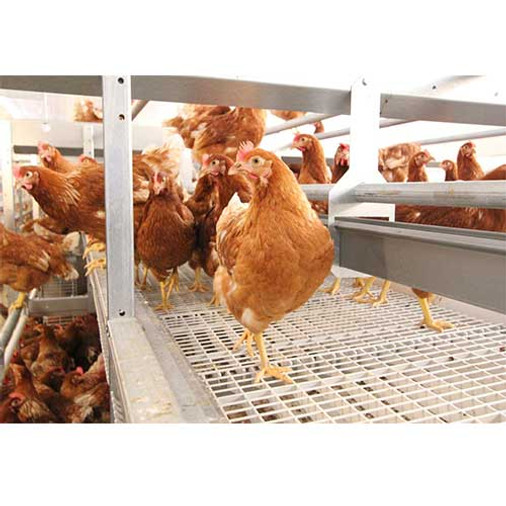An Overview of Poultry House Flooring Systems
Feb 28, 2022
Whether you maintain a small free range operation or a commercial farm with an intensive poultry housing system, your choice of flooring can impact the health and productivity of your livestock.
There are many different types of flooring for poultry houses. Each option has its own cost and production benefits alongside its own drawbacks.
If you’re planning to build a new poultry house or update an existing one, this article will provide an overview of the most common poultry flooring materials.
Building a new poultry house? Shop for building materials and poultry farm supplies from Farmer Boy!
Dirt Flooring
A dirt floor is the most basic form of poultry house flooring. It requires no additional construction or materials, and therefore is a low cost option. However, it has some significant drawbacks:
●Allows rodents and pests to burrow into the poultry house
●Is difficult to clean and limits biosecurity controls
●Flooring material is lost during cleaning
●Poultry can dig into the flooring, creating an uneven surface
Overall, a dirt floor is a highly cost effective option, but it’s less safe and efficient than other options.
Concrete Flooring
Concrete is another relatively simple flooring option for poultry houses. However, it’s often easier to lay a concrete pad during a new build than it is to retrofit one into an existing coop.
There are numerous advantages to a concrete pad floor:
●Low maintenance and easy to clean
●Relatively durable flooring
●Offers protection from burrowing pests and predators
Of course, concrete poultry flooring comes with its own drawbacks too, including:
●High upfront costs
●Permanent placement preventing it from being relocated with a coop
Despite its drawbacks, a concrete floor is a suitable option for smaller, permanent coops.
Wire Flooring
Wire flooring is touted as a low maintenance option for coops. In some cases the wire is backed with wood battens. Some of the benefits of wire flooring include:
●Lost cost and maintenance
●Easy to replace
●Widely available with multiple wire options
Despite its benefits, wire is a poor poultry flooring material in practice.
To keep out pests and predators, the wire must have small gaps, but these smaller openings often prevent waste from passing through. This makes wire flooring difficult to clean.
Wire flooring is unsanitary, but it can also cause foot problems for poultry. Depending on the type of wire, there may be sharp edges that can cut their feet, leading to infection.
Plastic Poultry Flooring
Plastic slats are becoming increasingly common and popular for commercial operations and even hobby farmers raising chickens in backyard coops.
Plastic offers a number of advantages:
●Safe for poultry and their feet
●Lightweight yet durable
●Rot resistant
●Easy to install or replace
●Easy to clean
Some prefab coops come with plastic flooring. These are an excellent choice for smaller operations or backyard farms. For commercial poultry operations, plastic poultry floor slats offer a flexible solution.
Rubber Mats And Flooring
Rubber is another increasingly popular flooring material. Unlike most other flooring systems, rubber requires a foundation created by another material to be effective. Most often, rubber is placed atop of wood or concrete. Because rubber flooring is available in rolls, it can be cut and shaped to any size building.
Rubber mats can help prevent wood from rotting, protect your poultry from predators, and help keep a coop clean.
However, rubber flooring can be expensive and is an added cost to a construction project.
Shop For Poultry Supplies And Flooring Options From Farmer Boy
Whether you’re planning a new build or a renovation, Farmer Boy has building supplies and equipment for any size job. Shop our poultry flooring options to find the best fit for your operation.
Need help with a large building material order? Call our sales team at 1-800-845-3374 for assistance!


